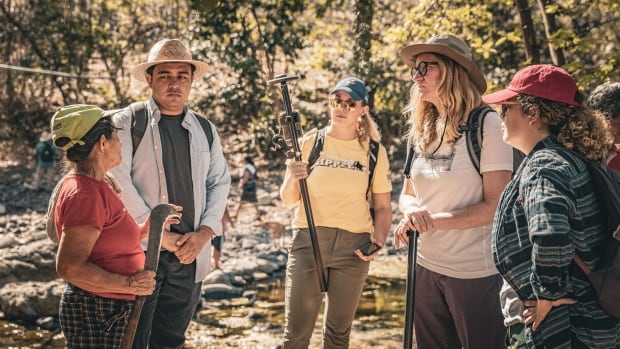A Western College challenge documenting dozens of massacres that befell throughout the Salvadoran civil conflict is permitting survivors to reconcile their nation’s historical past and grieve misplaced family members.
El Salvador’s civil conflict began in 1979. Upwards of 80,000 individuals had been killed by the navy regime, with many dying throughout raids in remoted villages and the jungle. Hundreds of our bodies had been buried in mass graves with nothing to mark them.
Since 2017, researchers on the London, Ont., college have been travelling to El Salvador to work alongside survivors, archeologists and native organizations to seek out and memorialize the precise location of every bloodbath web site.
They’re at present utilizing GPS locators, pinning areas on an interactive map alongside detailed memorials of witnesses.
‘A really lengthy course of’
“It has been a really lengthy course of working with survivors to hike into very dense jungle and forest to achieve some very distant websites, ” mentioned Amanda Grzyb, the challenge lead and a professor at Western.
“We carry a whole lot of gear with us, together with GPS gear and cameras to get exact areas. If the survivors want, we frequently movie a sworn statement on the web site.”

The interactive map and testimonials dwell on an online web page the group has known as Surviving Reminiscence in Postwar El Salvador, and with every go to to the nation, it grows to include extra tales from survivors.
It is gradual work. The crew explains that in a single occasion, they have been working since 2018 to situated the positioning of a grave dug in haste by villagers attempting to save lots of themselves from the navy.
Locals keep in mind seeing 14 individuals killed — six ladies, 5 youngsters and three males.
Working in the direction of reconciliation
“We introduced alongside a witness who was 10 years previous on the time of the bloodbath and who had watched it from a hilltop together with his father,” Grzyb mentioned
“We thought that we had situated the positioning and our companions performed an exhumation, and sadly it was not the spot. So we expect that we might must introduce ground-penetrating radar to really discover the exact location.”
The challenge can also be centered on commemorative actions and workshops held on anniversaries of specific massacres.
“It is opened an area within the nation that hasn’t been very clear within the final many years and it is attracting individuals from totally different backgrounds to speak about what occurred throughout the Civil Conflict,” mentioned Salvadorian postdoctoral scholar Adriana Alas Lopez, who has been concerned within the translation of the tales from individuals within the area.
“With the thought of a reconciliation, that’s one thing the nation must work towards. I feel the challenge is contributing quite a bit with documenting the historical past, and listening to the survivors’ histories and discovering out the complexity of their household historical past,” Alas Lopez mentioned.

